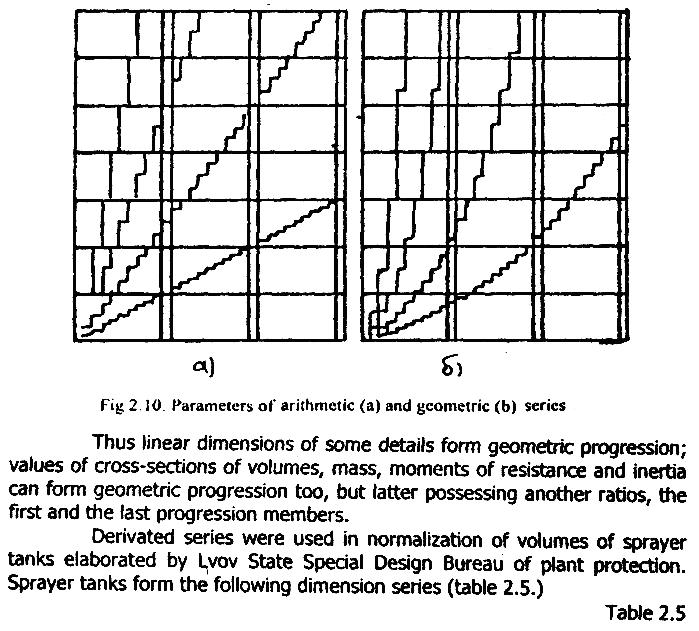2.3.4. Normalization.
Normalization is based on the series of numbers, obeying definite laws. Arithmetic and geometric series are used.
In arithmetic series every member is created by addition of constant number (difference of progression) to previous member. Value of any member of series ak=aO+kt where k- ordinal number of member ; aO-the first member of series, which is given zero number.
Fig.2.10. shows arithmetic series beginning with aO=10, t-10-1 in the range k=0-30.With t=5 arithmetic series in the range of the most applicable machine - building diameters d=10-100mm is the following: 10, 15, 20, 25, 30, У5, 40, 45, 50, 55, 60, 70, . ., 100.
Arithmetic sen'es are distinguished by relative uniformity. Their upper fields are more and lower fields are less saturated with dimension gradation. Ratio of each member of series to the previous one is of great value for the first members and sharply increases in the upper fields of series. Uniformity can be partially corrected by alteration of value t for different fields of series. Thus, for the series, given above, in the ranges d(2,5, t=5,t=10), can be relatively admitted. Then, we'll receive series: 10; 12,-5; 15; 17,5; 20; 25; 30; 35; 40; 50; 60; 70; SO; 90; 100 with more uniform gradation.
In gometric series each member is received by multiplication of a previous member by a constant value у (ratio).
Main series COST (ALL-Union State Standard) 8032-84 determines 5 preferable series of numbers with ratio.
Indexes "n" of a radical are admitted to be equal to 5,10,20,40 and SO.These numbers with letter "R" compose notation of series (table 2.4.).
Table 2.4
Value denominators of geometric series

Value of any series member is
With reduction of Y intervals between members decrease, number of series members increase, and series itself becomes more fractional (fig.2.10.).
For example, main series in fields $ and 10 are the following:
R=5;l;l,6;2,5;4;6;3;10.
R=10;l;l,25;l,6;2;2,5;3,15;4;5;6;3;8;10.
Derivated series. Geometric series for any range of numbers, i.e. with any value of initial and final members, can be received on the basis of main series. Derivated series are received by multiplication of the first member of new series from any number of their main secies (R5,R10,etc.) by ratio until value 100 is received, which is in its turn is multiplied by ttk. number of the same main series and etc. For example, derivated series with 1-1000 range will be written on the basis of series R=5; 1; 1,6; 4; 6,3; 10; 16; 25; 40; 100; 160; 250; 400; 630; 1000.

Назад Оглавление Вперед


